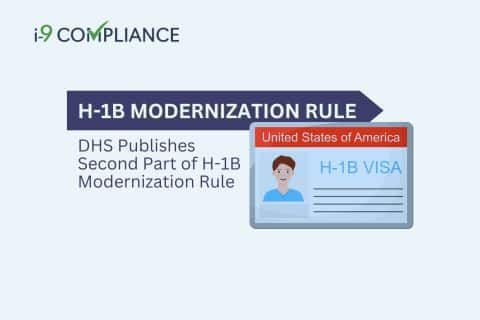DHS Publishes Second Part of H-1B Modernization Rule

The U.S. Department of Homeland Security (DHS) has recently published the second half of its H-1B Modernization rule. The DHS separated the H-1B Modernization rule into two parts. This decision allowed the Department to publish a notice and initiate comments on October 23, 2023, for the first half of the rule. Publishing it this way allowed the DHS to publish and modify the registration and lottery in time for it to apply to the 2025 fiscal year.
The DHS published the first half of the H-1B Modernization rule in the Federal Register under “Improving the H-1B Registration Selection Process and Program Integrity.” The DHS published the final rule on February 2, 2024. The second half received a separate name when published in the Federal Register. The DHS titled it “Modernizing H-1B Requirements, Providing Flexibility in the F-1 Program, and Program Improvements Affecting Other Nonimmigrant Workers.“
This rule includes many significant changes, including the following:
Redefining Specialty Occupation: The new definition clarifies that a specialty occupation does not universally require a bachelor’s degree; however, the DHS reminded all interested parties that typical entry into the occupation requires a degree. Additionally, an employer may accept multiple degree fields if each directly relates to the position’s duties. This final rule also omits a provision that would have disqualified more general degrees, such as liberal arts.
Allowing Deference for Prior Adjudications: The final rule remains consistent with current guidance. As such, USCIS officers will continue to make deferences to prior determinations when a Petition for a Nonimmigrant Worker (Form I-129) maintains the same parties and facts. However, they can still deny deference upon finding an error before approval, a change in circumstances or eligibility requirements, or new information that impacts the worker’s eligibility for immigration benefits.
Furthering Cap Gap Protections: The new regulation significantly increases cap-gap protections for F-1 students. However, the protections apply to those who did not partake in frivolous petitions when seeking a change to H-1B status. This change helps ensure that those changing to an H-1B status do not face gaps in employment authorization.
These changes should help employers obtain the workers they need more quickly, especially when employing individuals in specialty occupations. However, employers must remember to fill out the employment eligibility verification (Form I-9) paperwork despite how complicated it can be for these workers. One way to ensure they complete Form I-9s correctly is by using an I-9 management system. This system guides employers through the process and stores the forms and accompanying documentation for easy retrieval when needed.
Streamline your hiring process with an automated employment eligibility verification and ensure compliance today with I-9Compliance.